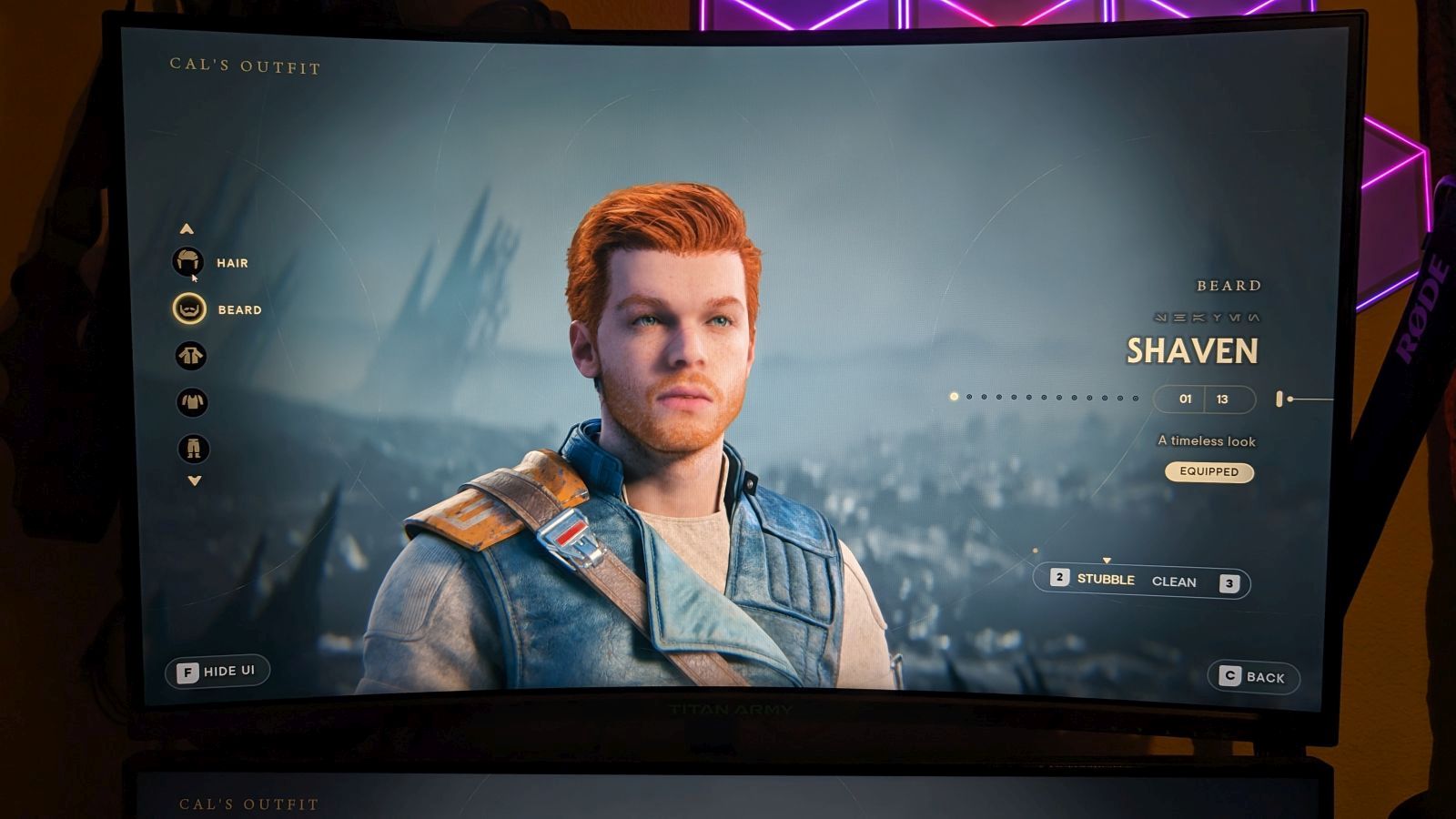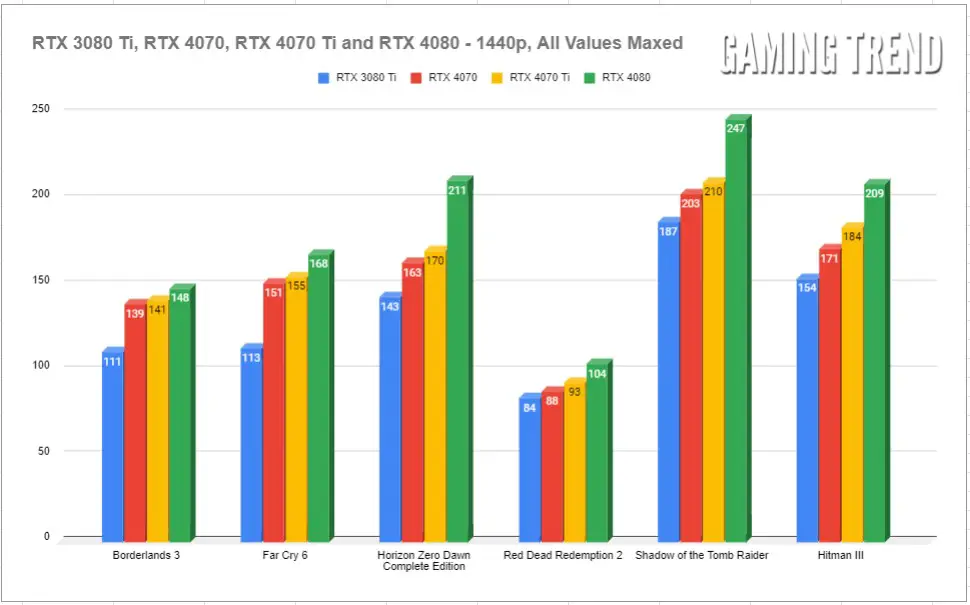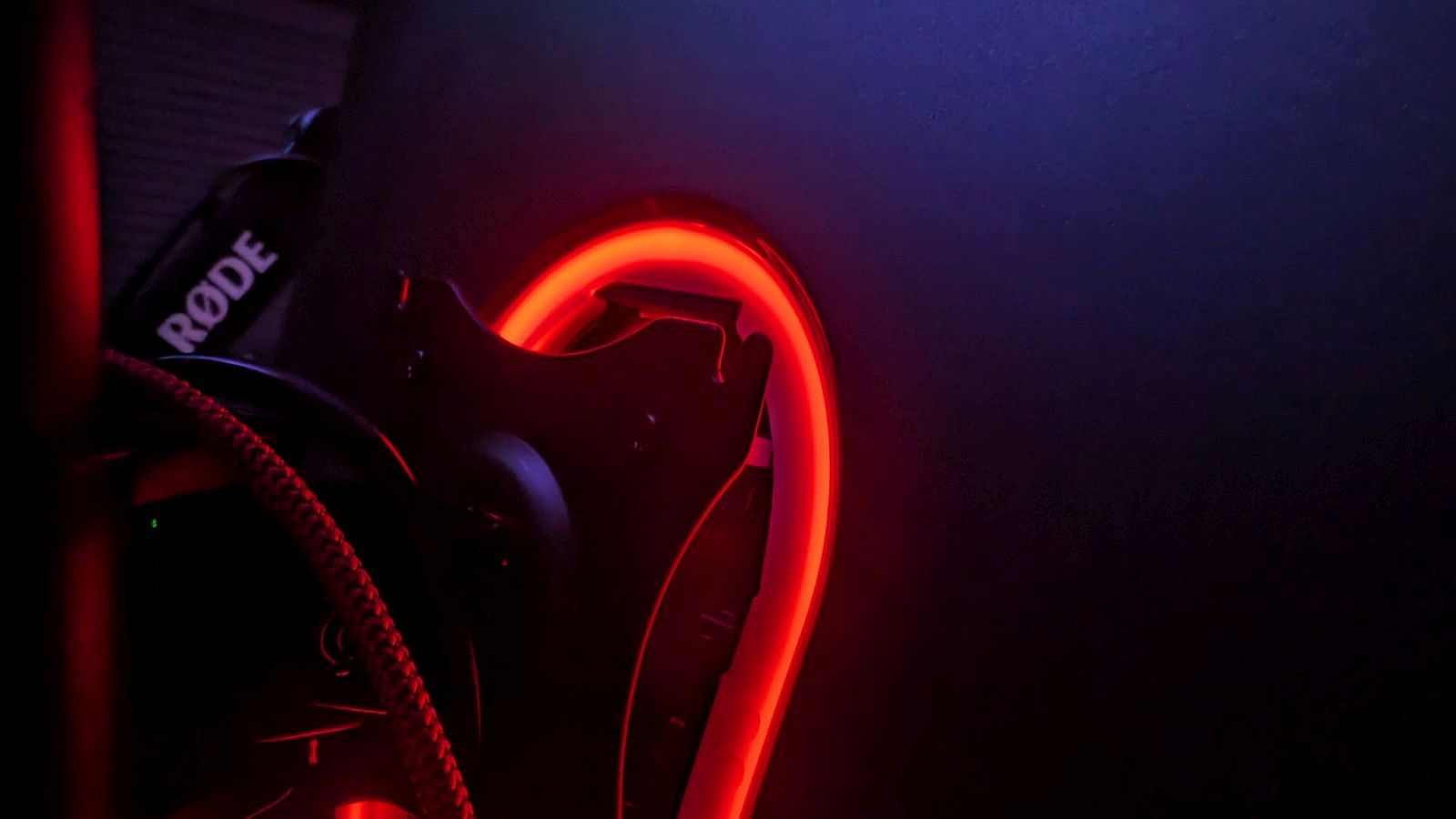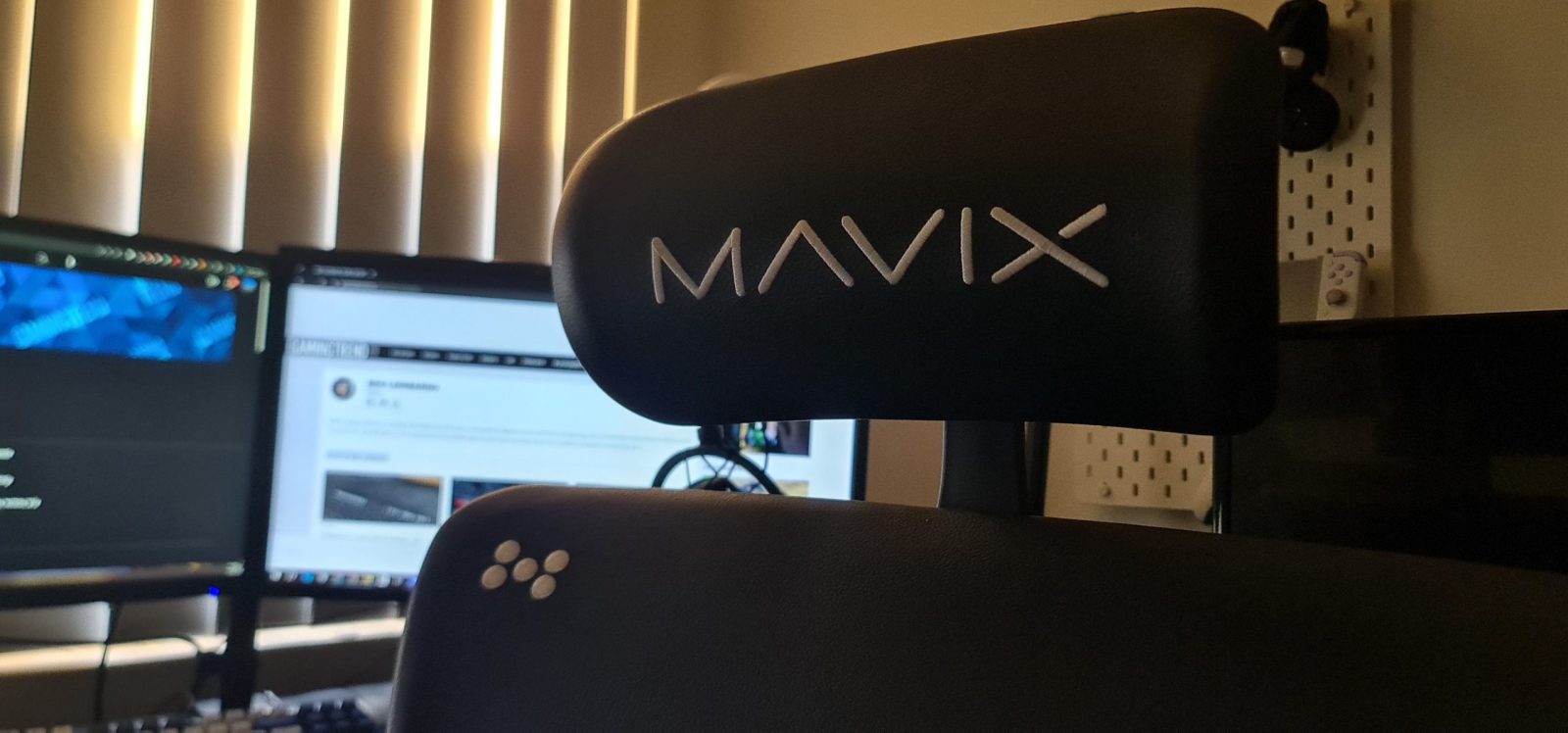You might not have heard of Titan Army as a monitor manufacturer, but after spending a month with their Titan Army C32C1S, they are certainly on my radar. With all the features that matter to the vast majority of gamers, this monitor ticks every single box…minus just a few. Let’s get into the specifics and find out why this curved beauty needs a home on your desk.
Starting off with all the specs, this is a 31.5” curved 240Hz monitor with a 16:9 aspect ratio, and a 1ms MPRT response time. It also has an impressive color coverage at 99% sRGB and HDR400 support. In practice, my monitor doesn’t show any bleed through in dark scenes, and looks gorgeous in the light. It also supports Adaptive Sync (once known as G-Sync), which ensures a tear-free outcome for both NVIDIA and AMD GPUs.

Mounting the monitor, you’ll have two options – the included V-shaped heavy metal arms, or the VESA mount. An included set of extension adapters will allow you to use a standard mount, but be mindful – the nearly 20 pounds of weight requires that you buy a monitor mount of some quality to match. I’m not a fan of having to swap in longer adapters to make the VESA mount work, but that’s a minor thing. Just don’t risk your $399 investment on a cheap mount, folks.
Once mounted, there are four ports for connectivity. Two HDMI Ver 2.1 and two DP Ver 1.4 ports. You can easily use these to hook up multiple devices like an Xbox Series X, PS5, laptop, or any other device and switch between them. If you were inclined to do so, the monitor is also bezel-less on top and both sides, meaning you could easily place two of them adjacent with minimal plastic in between.

The monitor has a Native 1500R curvature. If you are unfamiliar with the nomenclature 1500R signifies the maximum optimal viewing distance. The R stands for radius, and 1500 is the distance in millimeters. Converting to feet, that’s 4.92’ maximum view distance. I’ve used monitors between 1000R and 3000R, and 1500R really is the sweet spot for a monitor this large. Too much curve and the image distorts, too little and you lose any advantage over a flat panel. Once thought to be a gimmick, curved monitors have been shown to alleviate eye strain and headaches – something very germane to my own interests since I suffer greatly from migraines.
Looking at the color coverage, the C32C1S (not the sexiest name, for sure) has a 99% sRGB color gamut, which speaks to color accuracy. The sRGB color gamut refers to a standard established in 1998 which ensures that the input and output of color match perfectly, and in doing so, reduces overall errors and color defects. Monitors, printers, cameras, televisions, and many more devices use this standard, with only the very best panels hitting the vaunted 99% mark. The difference between 100% and 99% is indiscernible to the human eye, so this is top tier. There is another standard to pay attention to, however – HDR.
HDR stands for High Dynamic Range, and has to do with the way a panel handles the brightest and darkest scenes. This is most frequently expressed in how deep the black is when scenes are darkest. Poor panels will glow entirely too bright from edge to edge, even when the screen is dark. Similarly, bright and natural scenes may present as overbright or with colors bleeding from one to the next. This C32C1S supports HDR400, which is a subset of HDR10, confusing naming aside.

What does HDR mean? HDR stands for High Dynamic Range and refers to a technique that expresses details in content in both very bright and very dark scenes. It offers a more natural and realistic picture output even with a widened range of contrast. In this case, HDR400 means that it adheres to a subset of the HDR 10-bit standard, meaning the monitor can meet a peak brightness of 400cd/m2, or 400 nits. Typically you want to see 600 nits minimum for an HDR picture, though recent panels are able to pass the peak luminance tests (i.e. 10% center patch and flash test, 320 nit sustained minimum over 30 minutes, etc.) even if they cannot quite reach the vaunted 10-bit level. In practice, HDR is likely the most subjective of all monitor specifications. Putting an HDR10 and a good HDR400 monitor next to each other, you may or may not be able to spot the difference. Differences in color coverage, brightness, and more will likely see a wider difference, when HDR is enabled. In the case of the C32C1S, it’s nearly indistinguishable from my HDR10 4K monitor in brightness and visual quality, or near enough where I’d struggle to justify the nearly $500 difference in the price between the two on this point alone.
Let’s be honest and state plainly that most games don’t support high refresh rates at high resolution. Likely your GPU will fall short of the task, with only very old or very simple games able to reach anywhere near the need for 240Hz refresh rate – at least at 4K. No, the sweet spot for this generation is 1440p, and that’s precisely where the Titan Army C32C1S does its best work – 240 Hz at 2560×1440. Let’s take a look at the performance across several current cards at max settings and 1440p:

Moving to games built around DLSS, we see even bigger swings with that technology enabled:

Respectable numbers from a solid midtier card, but ones you can only take advantage of if you’ve got a monitor that can match the refresh rate. I’d love to be able to show you that visually, but unfortunately, my camera’s maximum framerate is 120, so I can’t reliably demonstrate the high speed nature of this monitor. Worse, YouTube would further clobber it down to 60fps, so you’ll just have to take my word for it.
As mentioned, the C32C1S supports Adaptive-Sync. Once you install proper drivers for your card, you’ll be given the opportunity to configure Adaptive-Sync. VSync attempted to do this very thing, but the effect was agnostic of any technology. It would instead attempt to correct the timing of frames being delivered from the video card and drawn on the screen. This would help with screen tearing (where the frames seemed to split, causing the scene to look like it was caught between two), but often at the cost of a small bit of performance, and for unreliable results. G-Sync, FreeSync, and ultimately Adaptive-Sync, all use a synchronization chip between the GPU and monitor to ensure a lag-free, tear-free experience for perfect clarity, even for the fastest of high-speed games.

As always, we look at the last two items on the checklist to close things out – price and warranty. The C32C1S is, at the time of writing, retailing for $369 – right in line with other 32” curved monitors with similar specs and refresh rates. There’s even a $20 coupon running currently, and you can shave an additional 5% off by hitting our link right here. Too many devices I’ve reviewed recently have a one year warranty, undercutting the value with an implied statement that the company can’t stand behind their product – that’s not the case here. I’m very happy to say that the C32C1S comes with a 3-year warranty. Moreover, they also offer a full 7-day return policy. If you are unhappy with your monitor, you can send it back for a refund of your purchase price. They even offer free shipping for that first year, and have a dead pixel replacement policy. Truly, it’s one of the most comprehensive and flexible warranty programs I’ve ever seen – well done, Titan Army!

It even has backlighting.
Ultimately, after several weeks of use, I found myself loving this curved monitor more and more. I’d used flat panels for decades, not realizing what a boon having that curve would have on my eyes. It’s not scientific, and I have no way of measuring it, but I can report that I’ve had a lot less eye pressure and headaches from staring at a screen all day. I have been using a triple monitor setup for the last five years, and I reduced it down to just two – my 4K monitor, and this curved one. When I eventually find a 4K curved 240Hz monitor, I’ll replace that one as well. Titan Army made me a believer with the C32C1S. It’s not a sexy name, but it’s a damned fine piece of tech.
Ron Burke is the Editor in Chief for Gaming Trend. Currently living in Fort Worth, Texas, Ron is an old-school gamer who enjoys CRPGs, action/adventure, platformers, music games, and has recently gotten into tabletop gaming.
Ron is also a fourth degree black belt, with a Master's rank in Matsumura Seito Shōrin-ryū, Moo Duk Kwan Tang Soo Do, Universal Tang Soo Do Alliance, and International Tang Soo Do Federation. He also holds ranks in several other styles in his search to be a well-rounded fighter.
Ron has been married to Gaming Trend Editor, Laura Burke, for 27 years. They have three dogs - Pazuzu (Irish Terrier), Atë, and Calliope (both Australian Kelpie/Pit Bull mixes).

With excellent clarity, a fast refresh rate, a generous warranty, and a gorgeous curved 32” screen, the Titan Army C32C1S delivers beautiful 1440p picture quality and at a blisteringly fast 240Hz refresh rate. If you’ve never tried a curved monitor before, this one will make you a believer – it sure did for me.
PROS
- Bright and gorgeous picture quality
- 1500R curve is great on the eyes
- Adaptive Sync capable
- Generous warranty coverage
- Comparably priced
CONS
- Using inside VESA mount can be a bit cumbersome
Unless otherwise stated, the product in this article was provided for review purposes.
See below for our list of partners and affiliates:

 3 months ago
114
3 months ago
114








